| Rating: |
|
24 Ratings |
| Your rating: |
|
Sign in to rate
|
Crazy about Hexagons
Lucy Boston Patchwork of the Crosses (POTC) and Pieced Hexagons or “hexies”
are everywhere these days.
This article includes some of our best tips for designing and sewing your quilt.
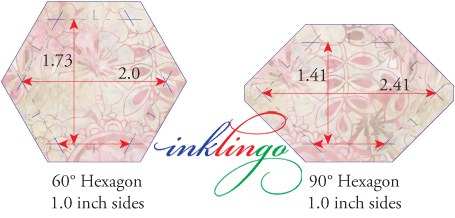
SIZE OF THE SHAPES
Hexagons are traditionally named by the length of a finished side. http://lindafranz.com/shop/hexagon-quilt-templates/5
This is necessary because hexagons are not “square.” In other words, the measurement across the center from point to point is different from the measurement across the center from flat side to flat side. That makes it easier to name them by the length of a side.
All Inklingo shapes to print on fabric are named by the length of a finished side, not just hexagons.
There are many advantages to this method of naming hexagons, triangles, and other shapes too.
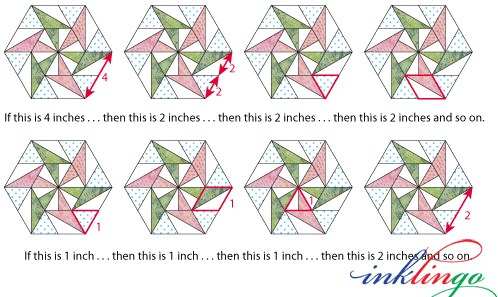
For example, if you know one measurement of a pieced hexagon, you know them all!
All you have to do is look at the size of an adjoining shape, as shown above. There are more examples on the All About Inklingo blog. http://www.lindafranz.com/blog/wednesday-tute-05-inklingo-pieced-hexagons/
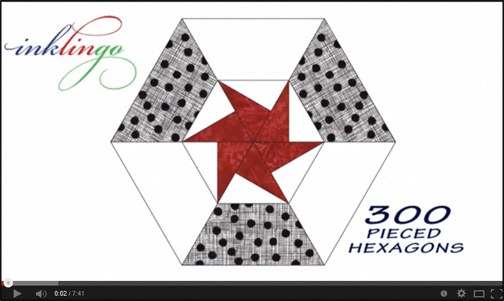
There are at least 300 different designs in this short video and you can make them in several sizes with Inklingo! http://lindafranz.com/shop/hexagons/5/product/300-pieced-hexagons/151
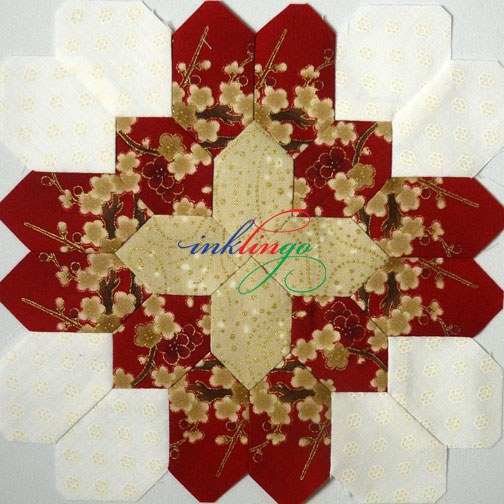
BAD INFORMATION ABOUT FUSSY CUTTING - OH NO!
A few days ago an Inklingoist sent me a link to a message in an online forum which stated that it is harder to fussy cut with Inklingo. (She thought I should respond.)
When you see statements about Inklingo like this, it is a good idea to ask the quilter if she has actually used Inklingo or just thought about it in the abstract.
This quilter had not used Inklingo, of course, or she would have known better.
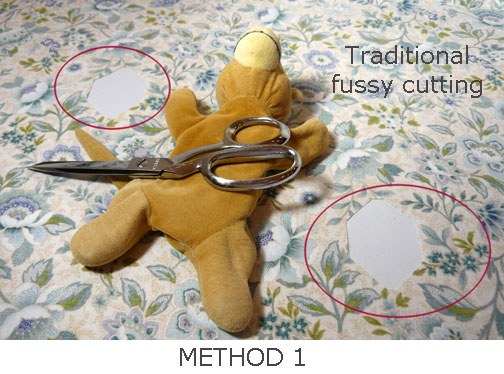
You can fussy cut fabric using traditional methods with Inklingo. It is the same. The same is not harder. LOL The same is the same.
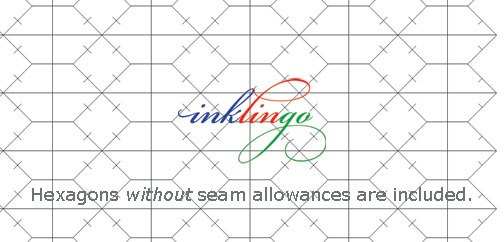
Templates without seam allowances are included in every Inklingo hexagon shape collection, so you can use paper templates to fussy cut in the same way you would for EPP.
With Inklingo, you can print templates on paper, cardstock, or freezer paper, (whichever you prefer) and rotary cut several layers at a time. It can be less expensive than buying pre-cut papers.
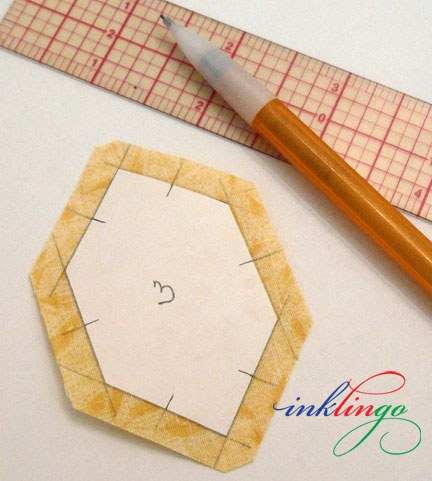
Quilters use templates without seam allowances for both a running stitch and for whip-stitching.
However, drawing the seam lines with a mechanical pencil is faster, easier, and more precise than basting onto templates for EPP— plus you can use the fussy cut pieces with other shapes printed with Inklingo!
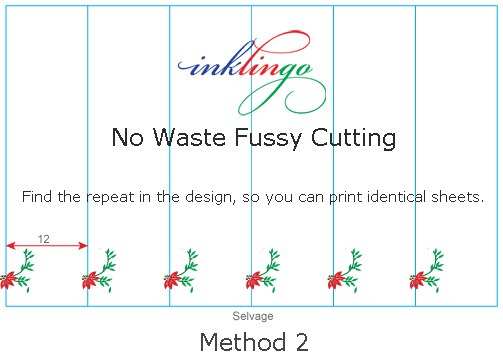
The only difference is that with Inklingo there is a SECOND METHOD of fussy cutting that is even easier and doesn’t waste fabric! With
Inklingo, you can print identical sheets of fabric to get results similar to Stack n Whack™ or One Block Wonder.
There is detailed info about how to find the repeat in the fabric design and how to print identical sheets of fabric on the All About Inklingo blog. Search for No Waste Fussy Cutting or start with this article on QuiltingHub. /Articles/ArticleID/202
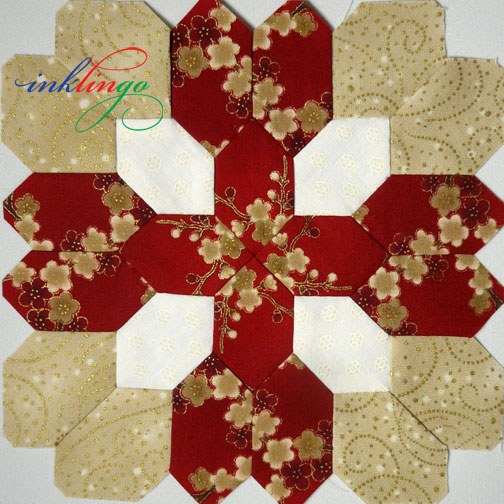
The quilter in the forum said fussy cutting with Inklingo is harder, but I have also heard quilters say that you can’t fussy cut with Inklingo at all!
Both are wrong.
Inklingo works perfectly for fussy cutting the traditional way OR for No Waste Fussy Cutting.
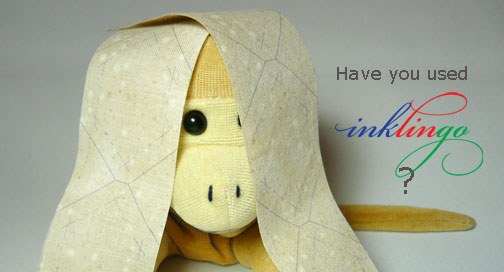
Monkey says it’s probably a good idea to get advice about using Inklingo from quilters who have actually used it.
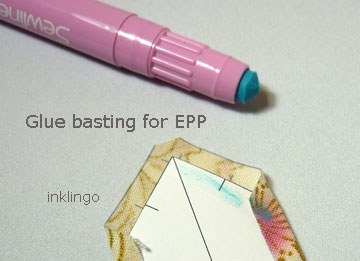
In the olden days, quilters in Europe and Australia used paper templates and whip-stitching to sew shapes together. It is probably still the most common method in Australia but many quilters glue-baste the templates instead of using a needle and thread.
If you are convinced that nothing is better than English Paper Piecing, the rest of this article may not make you happy. Please stop reading now and sew instead, okay?
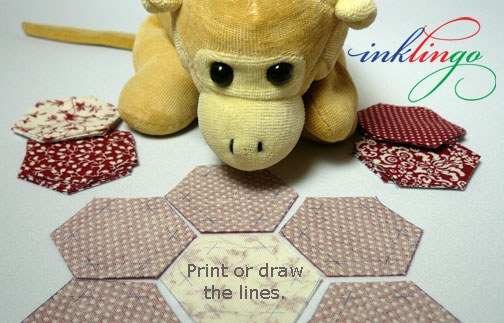
In Canada and the USA, it has been more common to use paper templates but draw stitching lines around the shapes and sew with a running stitch. (This is the method I teach in my Quilted Diamonds books with freezer paper templates.) Drawing the lines is faster and easier than basting, whip-stitching, and removing templates but printing with Inklingo is even faster.
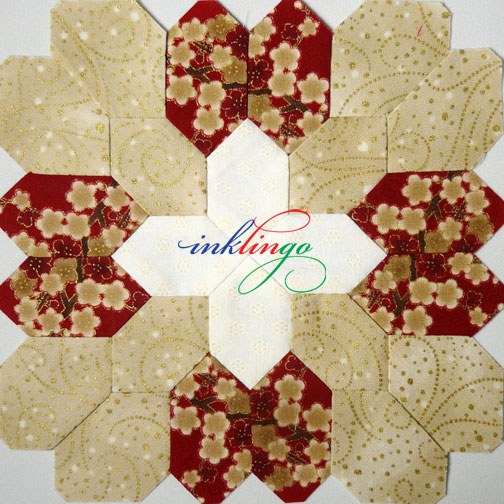
Recently, some North American quilt shops are teaching English Paper Piecing, especially for my book Lucy Boston Patchwork of the Crosses. It drives me crazy! I feel terrible about it!
I included instructions for EPP in the book—but only because it is the method Lucy Boston used. I tried to make it clear that it is the slowest, least accurate, and least portable method in the book (page 7). There are no advantages to it that I can see compared to sewing with a running stitch.
Why EnglishPaper Piece? http://lindafranz.com/galleries/english-paper-piecing/30
Only a very skilled needlewoman can sew 20 stitches to an inch the way Lucy Boston did. She learned how to sew by mending old quilts. She never took a quilting class and did not know there was any other way.
Lucy Boston was a practical woman. She did not want to waste a scrap of fabric, so I think she would have loved No Waste Fussy Cutting! You have a choice to be practical too.
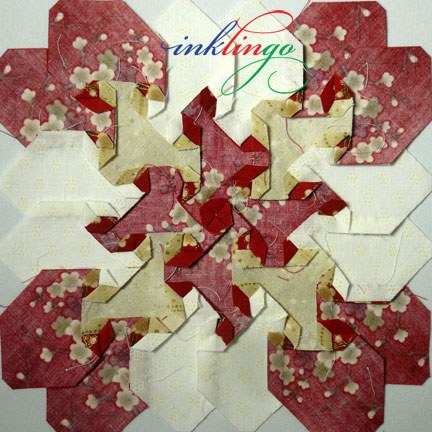
Even if you don’t want to print on fabric with Inklingo, it is faster and easier to mark sewing lines than it is to baste fabric to templates, and it is easier and more accurate to sew with a running stitch than to whip-stitch.
Not only is it faster and more accurate to sew with a running stitch, but the quilts look better because the stitches don’t show on the front and the seams can be pressed to the side (above).
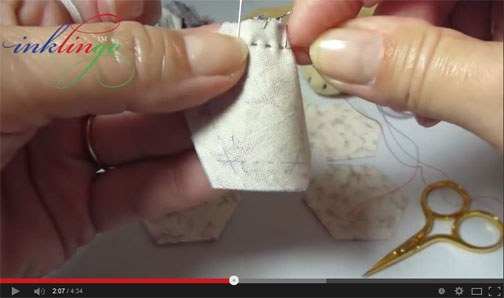
If you want to sew by hand, I always recommend a running stitch as demonstrated in the video.
It doesn’t matter whether you mark the stitching lines manually or print them with Inklingo. Either way, you will get better results in less time than with English Paper Piecing and it is more portable too!
With Inklingo, we have the best of both worlds. Printing the shapes on fabric is faster and more precise than marking the sewing lines manually, so quilters can finish complex designs in the amount of time they want to spend making a quilt--and get the best results.
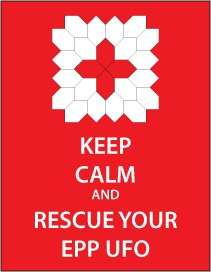
If you have been steered towards English Paper Piecing for Lucy Boston Patchwork of the Crosses (POTC) or Pieced Hexagons by a teacher or quilter who has never used Inklingo and you don't want to end up with a UFO, don’t worry! Keep calm!
You can switch part way through a project and finish with a running stitch—with or without Inklingo.
Isn’t that nice and friendly?
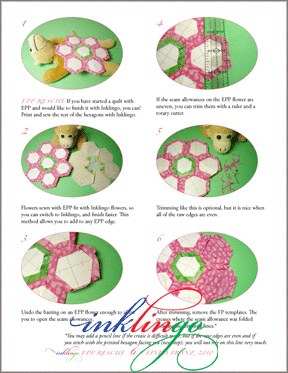
English Paper Piecing Rescue (free PDF) is one of the most popular pages on my
website.
I frequently hear from quilters who find EPP
- too slow
- too difficult
- too hard on their wrists
- too glue oriented, or
- too discouraging, and who are relieved to be able to finish with an easier method.
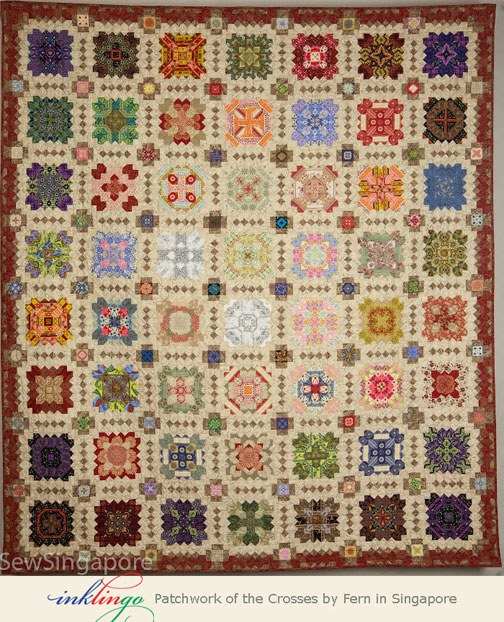
Fern in Singapore made this gorgeous fussy cut Patchwork of the Crosses with Inklingo. She sewed some blocks by hand and some by machine.
It was juried into the Houston Quilt Show! If you can’t wait until October to see it there, there are more photos of it on the All About Inklingo blog. http://www.lindafranz.com/blog/lucy-boston-patchwork-of-the-crosses-in-houston/
Fern wrote:
“
I am such a convert to Inklingo. It has transformed my life. I cannot see myself doing EPP again. Inklingo is better, more accurate, faster, and you do not see the stitches too, so so much prettier!
Fern
Sometimes I hear from quilters who recently learned EPP and who persevered through a few blocks before they saw another quilter sewing 3 or 4 fussy
cut blocks with a running stitch in the time it took them to make only one!
Monkey and I apologize if you mistook the EPP instructions in any of my books or the EPP tutorials on the All About Inklingo blog to mean that I recommend it!
Inklingo has been around since 2006. I can understand someone using EPP if they learned a long time ago and are not willing or able to try something new, but do you wonder why anyone would start teaching EPP now? I do.
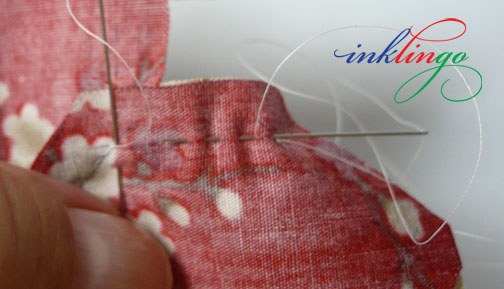
I hope you will try drawing lines and sewing with a running stitch, even if you aren’t ready to print shapes on fabric.
On the other hand, there is a free Inklingo shape collection with versatile Diamonds Triangles and Squares, so you can try Inklingo whenever you like, no risk. http://lindafranz.com/shop/inklingo-getting-started/3 Sew by machine if that is what you prefer.
There are just 3 key concepts in the Inklingo Quick Start Guide. http://inklingo.com/section/inklingo-quick-start/63 I often hear from quilters who say they were “over-thinking it” and wish they had just started printing sooner.
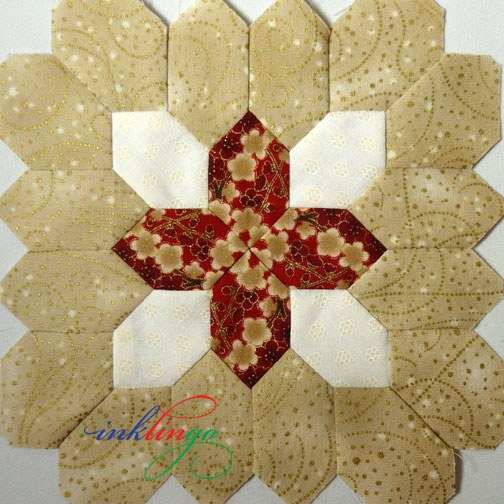
Sewing is meant to be fun and we want to help you get the best results you can.
We are lucky to be quilters in the twenty-first century, aren’t we? We have the best, most ingenious tools and the best selection of fabric in the whole history of the world!
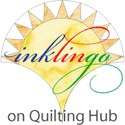
You can search for Franz or Inklingo to find more articles on QuiltingHub.
If you enjoyed this article, please log in and “like” it. Thank you for visiting Inklingo on QuiltingHub!
Check This Out!
Check out the most popular tool on QuiltingHub. Use the search 'Map Of Resources' or the 'Resources Trip Planner' to the right (or below).
Glossary
- Basting
-
A temporary method of holding the quilt Sandwich layers together while you finish assembling it. This can be conducted using Basting Sprays, pins, clips or temporary stitching called a Tacking Stitch or Basting Stitch.
- Block
-
The basic unit of a quilt top, usually square but can be rectangular or other shapes. Blocks can be pieced, appliqued or plain.
- English Paper Piecing
-
A method of hand piecing where paper templates are used inside the block elements to guide where the edges are turned under and templates are removed. Baby Blocks, Grandmother's Flower Garden and other non-square shapes are often pieced this way.
See Also: Assembly Piecing, Machine Piecing, Chain Piecing, Paper Piecing, Hand Piecing, Piecing
- Fussy Cut
-
The cutting out of specific areas of a fabric to use the image or motif on the fabric. Often used to isolate animals, flowers, etc from a Conversation Print or Novelty Print fabric. A template may be used to cut out many images to be the same size for use in a block. Because the remaining fabric then looks like Swiss cheese, it is wasteful of fabric.
- Patchwork
-
The basic method of making a quilt by sewing many small pieces of fabric together.
Same As: Piecework
- Running Stitch
-
A hand needlework technique in which the needle accumulates several stitches on it before needle and thread are drawn through the cloth. The running stitch is used in both piecing and quilting.
- Stack
-
An easy way to create quilt blocks with unique kaleidoscope designs. These designs require a set of identical pieces cut from a print fabric. Rather than finding and cutting each piece individually, a quilter can cut and layer a number of large, identical print rectangles to make a stack.
Same As: Stack-n-Whack, Whack